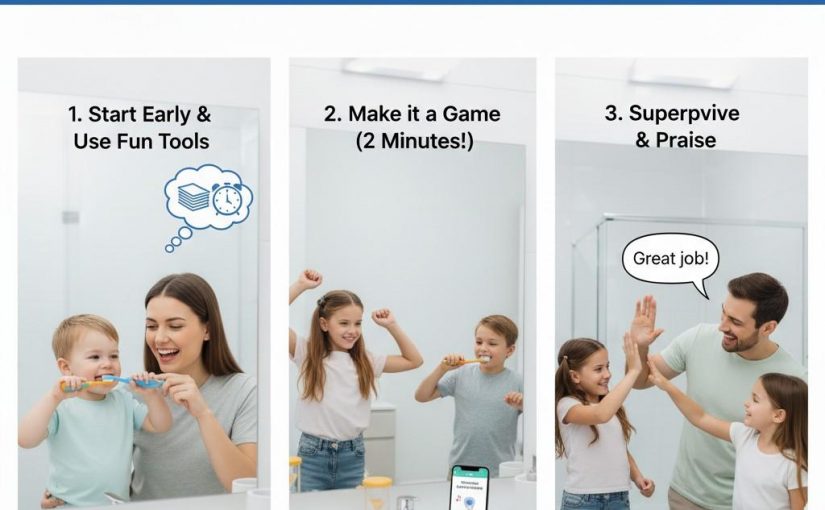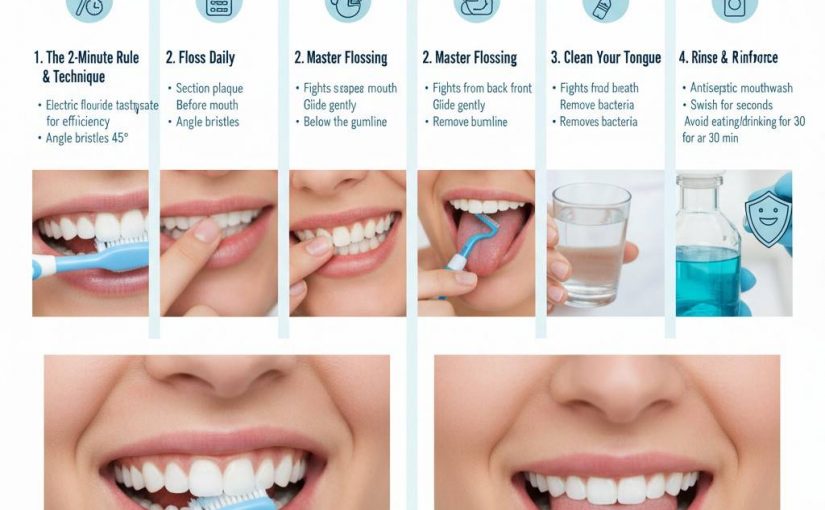As any parent knows, teaching kids to brush their teeth can sometimes feel like an uphill battle. Between the distractions, the resistance, and the occasional toothpaste mess, it’s no surprise many parents ask us at Metro City Dentistry: “How can I get my child to brush properly — and actually enjoy it?”
The good news? With a little patience, consistency, and a touch of creativity, you can help your child develop brushing habits that will last a lifetime.
Here’s a helpful guide for making oral hygiene fun, effective, and part of your family’s daily routine.
-
Start Early and Make It a Routine
The earlier you introduce brushing, the easier it is to build the habit. As soon as your child’s first tooth appears, you can begin gently brushing with a soft-bristled infant toothbrush and a smear of fluoride toothpaste (about the size of a grain of rice).
As your child grows, brushing should become a twice-a-day routine — once in the morning and once before bed. The key is consistency. Make brushing teeth part of the daily flow, just like putting on pajamas or eating breakfast.
-
Make Brushing a Family Activity
Kids love to copy what their parents do. So, why not brush your teeth together? Not only does it reinforce the importance of dental care, but it also turns brushing time into bonding time.
Let your child watch you brush and floss. Demonstrate how to reach every tooth and how to spit out the toothpaste. You can even brush each other’s teeth (at least once!) to add some fun and laughter to the process.
-
Let Kids Choose Their Tools
When children get to choose their own toothbrush and toothpaste, they’re more likely to be excited about using them. Head to the store and let them pick out a toothbrush with their favorite color or cartoon character and a kid-friendly toothpaste flavor like bubblegum or strawberry.
Just make sure the toothbrush is soft-bristled and child-sized, and the toothpaste contains fluoride.
-
Use a Timer or a Song
Dentists recommend brushing for a full two minutes, but that can feel like an eternity for a young child. To keep them engaged:
- Use a timer (digital, sand, or even an hourglass).
- Play a two-minute song while brushing.
- Download a brushing app that offers animations or games to guide them through the process.
At Metro City Dentistry, we often recommend brushing to the tune of a favorite song — it’s an easy and effective way to make time fly!
-
Make It a Game
Turning brushing into a game is one of the best ways to make it fun instead of a chore. Try some of these ideas:
- “Cavity monsters”: Pretend that you’re brushing away pesky sugar bugs or cavity monsters hiding on their teeth.
- Sticker charts: Create a brushing chart where your child earns a sticker every time they brush. After a week of good brushing, reward them with a small prize.
- Brush the toy’s teeth: Let your child practice brushing on a stuffed animal or doll before brushing their own teeth.
The more fun it is, the less resistance you’ll face.
-
Teach Proper Technique (But Keep It Simple)
Young kids don’t need to master complicated brushing techniques — but they should learn the basics:
- Use a pea-sized amount of toothpaste (for children aged 3 and up).
- Brush in gentle circles on all tooth surfaces.
- Don’t forget the back teeth and along the gumline.
- Spit out the toothpaste after brushing (no need to rinse with water).
Most children need adult supervision and assistance until around age 7 or 8, when they develop the dexterity to brush effectively on their own.
-
Celebrate Progress, Not Perfection
Focus on consistency and effort, not perfect technique. Celebrate milestones like a full week of brushing twice a day or brushing without reminders.
Avoid turning brushing into a power struggle. If a child is resistant, try brushing their teeth while they lie on your lap or while reading a book. Keep things lighthearted and encouraging.
-
Visit the Dentist Early and Often
Your child’s first dental visit should be by their first birthday or within six months of their first tooth. Regular dental visits help:
- Reinforce good oral habits.
- Catch problems early.
- Make dental visits a normal, non-scary experience.
At Metro City Dentistry, we love working with kids and families to make every visit fun, friendly, and educational.
Final Thoughts
Teaching kids good brushing habits takes time, patience, and creativity — but the long-term benefits are well worth the effort. By making oral care fun and routine, you’re setting the stage for a lifetime of healthy smiles.
At Metro City Dentistry, we’re here to support your child’s dental health at every stage. Whether you need guidance on brushing techniques or it’s time for their first checkup, our caring team is ready to help.
📞 Book your child’s dental visit today and let us help you keep their smile healthy and happy!






